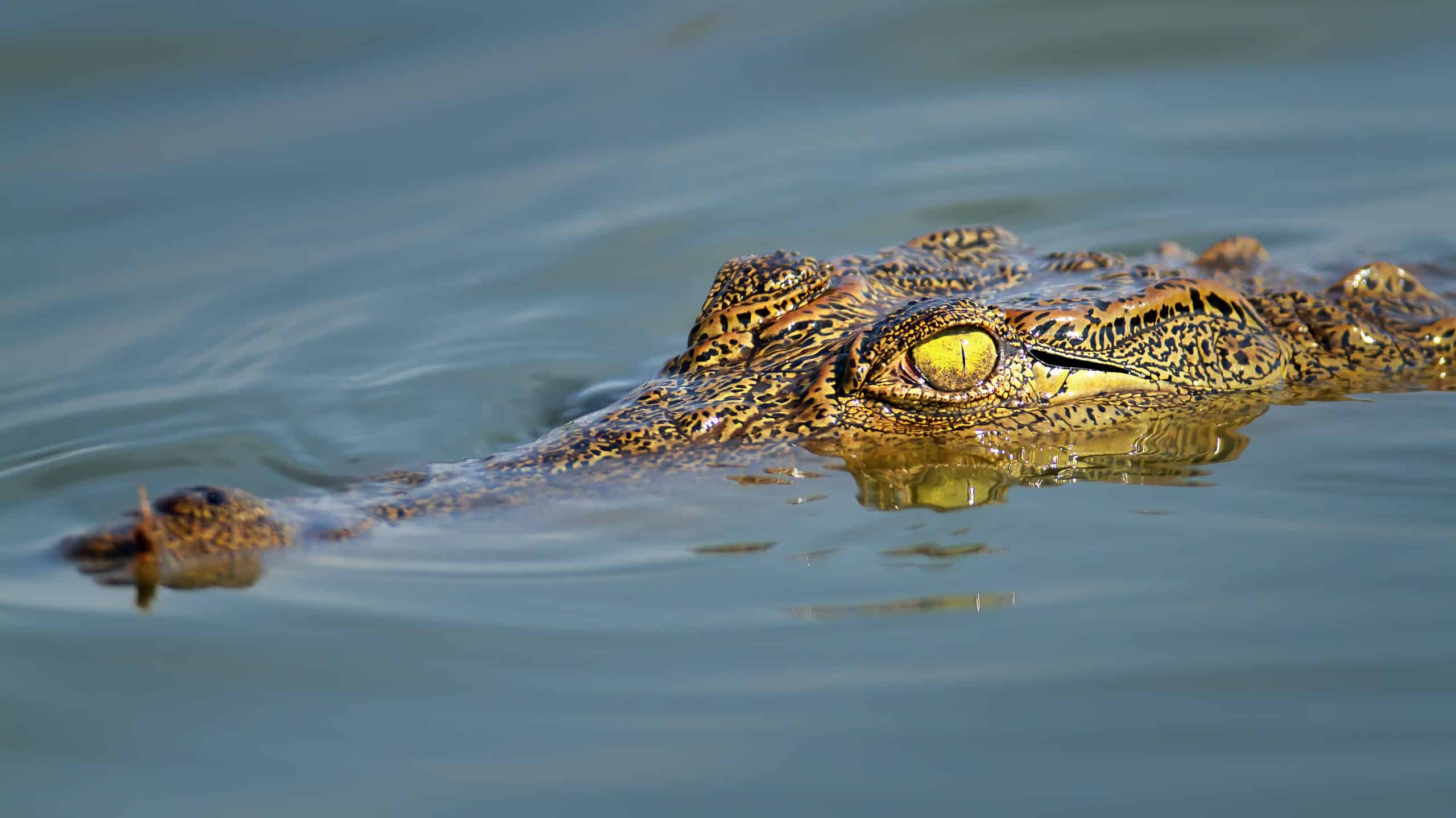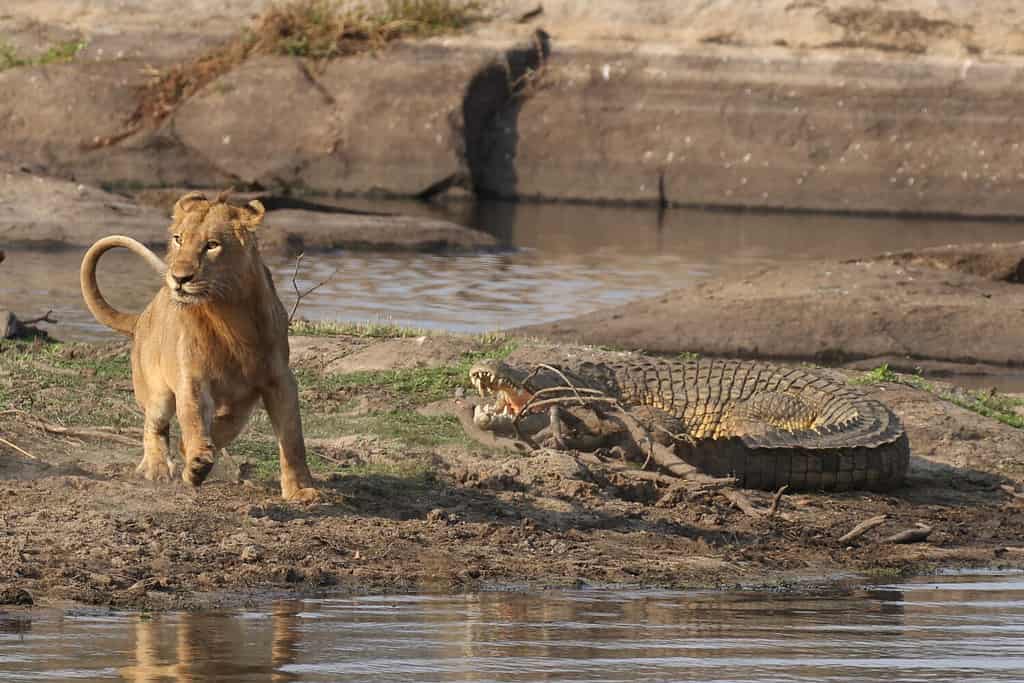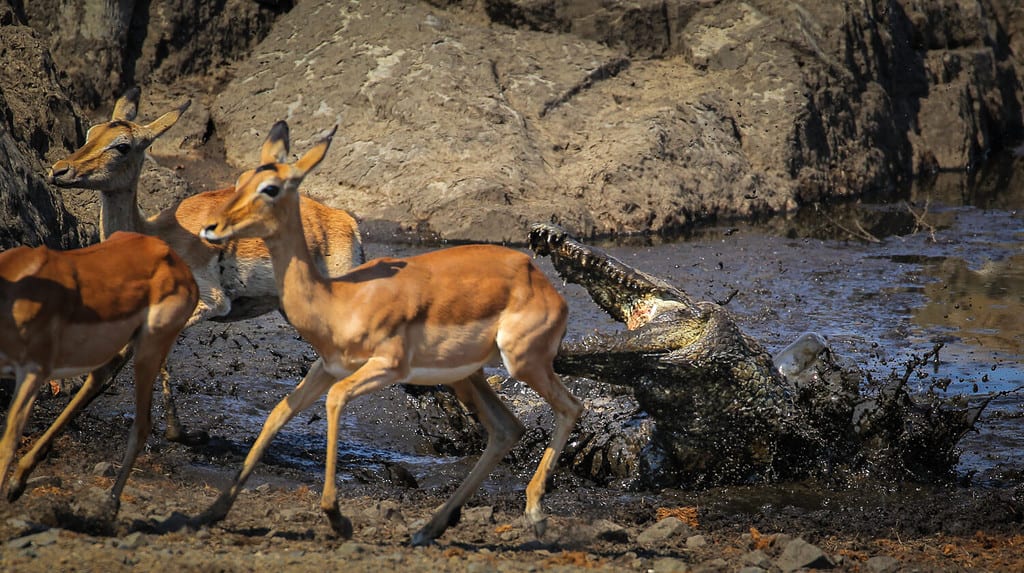Continue reading for our analysis...

This buck was in for the fight of its life while crossing a crocodile-infested river. As the scene unfolds, we see the lechwe (a species of antelope found in south-central Africa) desperately hop and swim while being heavily pursued by an aggressive croc, looking for its next meal. While the buck gets off to an impressive start, the crocodile begins to close the distance, putting more pressure on the buck to outlast the chase. While he inches closer to shore, the deadly reptile takes its first swing. However, the buck narrowly evades the strike. Because crocodiles have the most powerful bite force in the world (3,700 psi for saltwater crocs, for example), that maneuver likely saved the antelope’s life. In the end, he safely made it to land.
The footage occurred in Botswana, where this waterbuck is known to inhabit swamps and floodplains — areas swarming with these vicious, prehistoric reptiles. As you noticed in the video, the crocodile stopped pursuing the lechwe once it reached land. You might be wondering why, so continue reading to learn about the common hunting strategies of this incredibly lethal predator.
Do Crocodiles Hunt on Land?

Crocodiles are ancient reptiles dating back over 200 million years.
©Beate Wolter/Shutterstock.com
You can certainly find a crocodile hunting on land. These swift predators can travel up to 25 miles per hour on the ground. In fact, their eyes are more equipped to focus on a target in air than in the water. However, they primarily hunt in the water, where they have a built-in advantage. Hunting in a body of water allows the crocodile to remain in stealth mode, which means their target is unaware of their presence. Furthermore, their third eyelid protects the croc’s vision underwater, enabling it to keep its eyes open without suffering damage from the water.
When and How Do Crocodiles Hunt?

Crocodiles are cold-blooded reptiles, so they must stay in the sun to regulate their body temperatures.
©JMx Images/Shutterstock.com
Crocodiles often hunt at night, basking in the sun during the day to regulate their body temperatures. Most reptiles are ectothermic, meaning they are naturally cold-blooded. Crocs are advanced ambush predators, capable of taking down large prey such as zebras, water buffalo, and antelopes (as attempted in the footage). In addition, they also hunt smaller prey like fish, birds, and crustaceans. Once a croc locks its jaws on its target, it will drag the animal underwater and drown it. Fortunately for that lechwe, it avoided a similar fate.
Thank you for reading! Have some feedback for us? Contact the AZ Animals editorial team.







